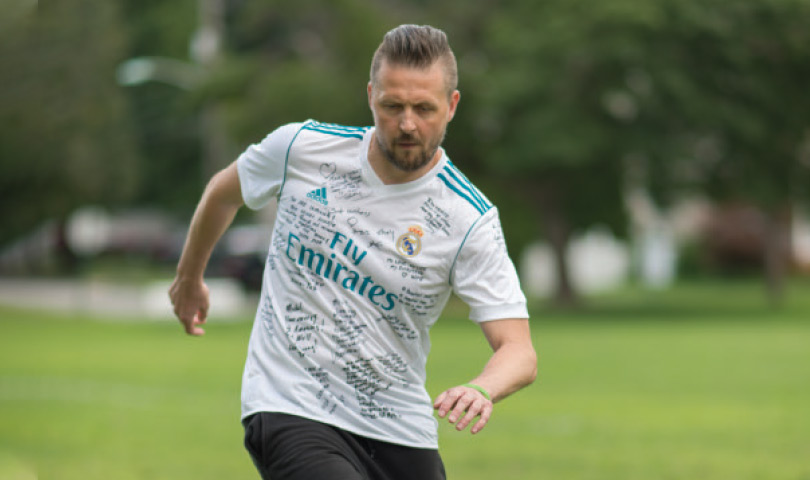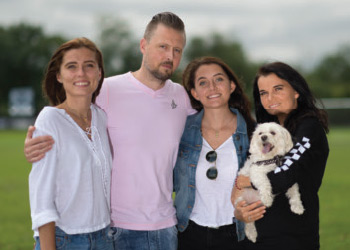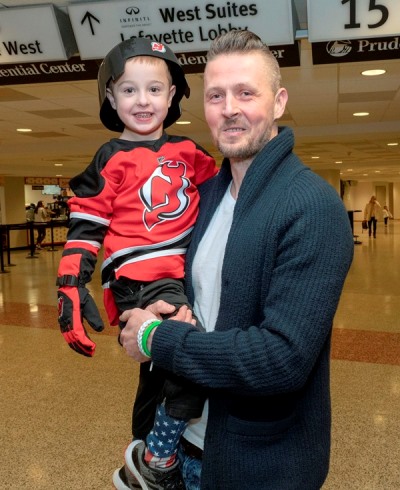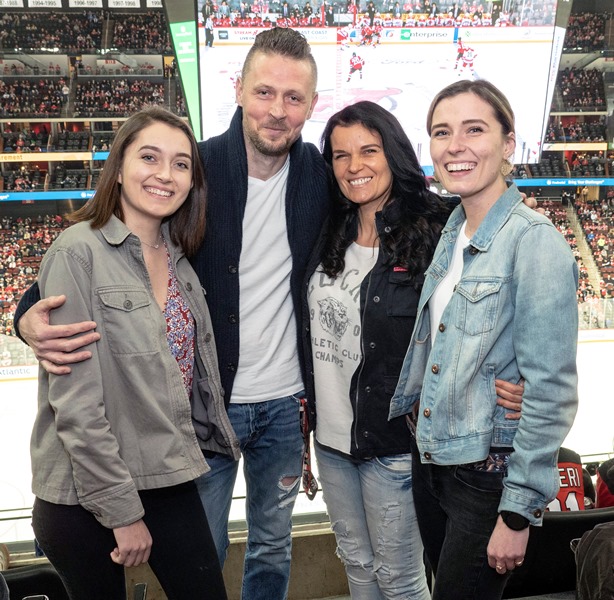“Everyone who took care of me did an amazing job.”

When heart failure struck an active husband and father, a transplant saved his life.
Michal Duchnowski had just come home from a family vacation spent hiking and swimming in Mexico when the normally active, energetic husband and father started to feel exhausted.
“When I go somewhere, I always want to get out and do things, stay active,” Michal says. “After we got home, I could barely even walk up the stairs. They think it may have been a virus that affected my heart.”
Michal, only 36 at the time, tried a host of medications, but the damage to his heart grew until it became clear he would need a heart transplant.
“My husband is a strong, healthy business owner and father who always puts his family first,” says Michal’s wife, Dominika. “It turned all our lives upside down to see him become so sick that only a transplant could save his life.”
Michal’s cardiologist referred him to the Advanced Heart Failure (AHF) and Heart Transplant Program at Robert Wood Johnson University Hospital and Rutgers Robert Wood Johnson Medical School. Under the leadership of the AHF cardiologists Deepa Iyer, MD, Kanika Mody, MD, and Surgical Director Aziz Ghaly, MD, the multidisciplinary team of nurse coordinators, social workers and dietitians seamlessly manages the assessment, care and treatment of patients.
“For patients suffering heart failure, they’ll usually start with medications, then an electrophysiologist may try to resynchronize the heart with a pacemaker,” Dr. Ghaly says. “But once they reach the advanced stages of heart failure, they’ll need a heart transplant. Fortunately, we can use a ventricular assist device (VAD) to help them survive until we find a donor.”
Michal underwent surgery to have the VAD implanted last year. The device is a mechanical pump that’s placed inside the body and attached to the heart to help circulate the blood. The VAD has wires that come out of the abdomen and connect to external battery packs and a control unit. These devices can be cumbersome to carry around, but they allow patients to live a mostly normal life while waiting for a heart transplant.
Waiting For a Heart
“The hardest part was having these cables coming out of my stomach and needing to carry the device around in a backpack,” Michal says. “The original bag it came with didn’t work well for me, so I improvised a backpack that I found online so I could stay active. I could do almost everything I wanted — including 100 push-ups a day. The only thing I couldn’t do was go swimming.”
The VAD is a vital tool for helping patients like Michal bridge the gap between when their heart failure occurs and when a donor heart becomes available.
“There are simply not enough heart donors for the number of patients who need transplants,” says Dr. Ghaly. “This device allows us to help patients live an excellent quality of life until we can find a donor who has a matching blood type and is roughly the same size and weight as the patient.”
Michal finally got the call he had been waiting for in early January 2018.
“They said, ‘We have a heart for you,’ so I called my wife to let her know and we went to the hospital that day,” he explains. “Everyone who took care of me did an amazing job.”
“Heart transplant surgery is a lot like any other heart surgery,” Dr. Ghaly says. “We have a very high success rate. Patients generally stay in the hospital for 10 to 15 days, and they have to take medications that lower their immunity for a while to try and prevent rejection of the new heart. But it can lead to a nearly normal life for patients who wouldn’t otherwise survive.”
Return to a Full Life
 Following the successful transplant surgery, Michal, who was 39 years old at the time, had to avoid physical activity, including his favorite pastimes like swimming and soccer.
Following the successful transplant surgery, Michal, who was 39 years old at the time, had to avoid physical activity, including his favorite pastimes like swimming and soccer.
“For three months, I couldn’t even pick up five pounds,” he says. “And I had to wear a mask in public to avoid getting sick.”
Dr. Ghaly says that Michal was a great candidate for a heart transplant because he was active, healthy and sought treatment early.
"The most important message for us to communicate is the importance of early referrals,” he says. “Healthier patients have shorter hospital stays, faster recovery times and better chances of survival.”
More than six months after the transplant, Michal finally got to go swimming again.
“I went out to the beach, Sandy Hook, and it was amazing to get back in the water,” he says. “I’ll never forget that. I’m so thankful to my wife and daughters for all their help, and to the doctors and nurses who cared for me,” he adds. “And my whole family will be forever grateful to the donor whose heart saved my life.”
An Inspiration to Others
Michal was honored in 2019 as the New Jersey Devils Hero of the Game during the team’s Go Red Day at the Prudential Center in Newark. He continues to educate and inspire others with his story.

Michal inspired a young heart patient who came to meet him after hearing his story

To learn more about heart transplant at Robert Wood Johnson University Hospital, click here.